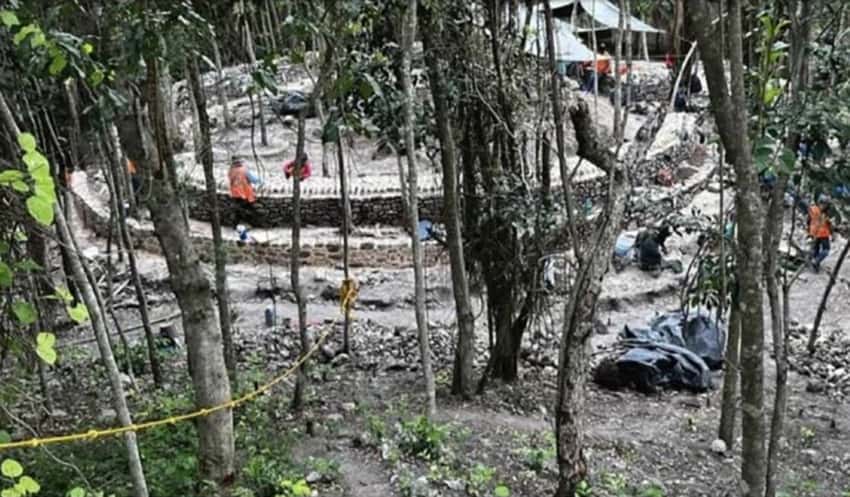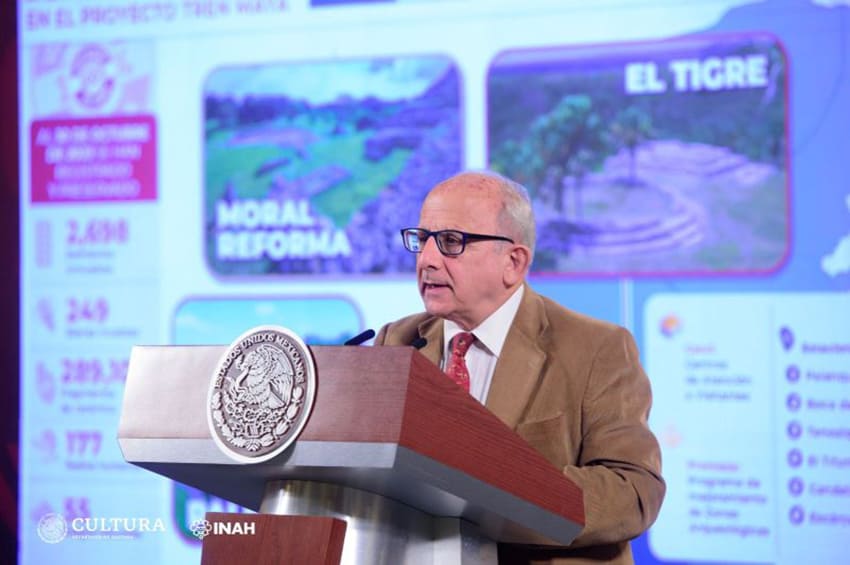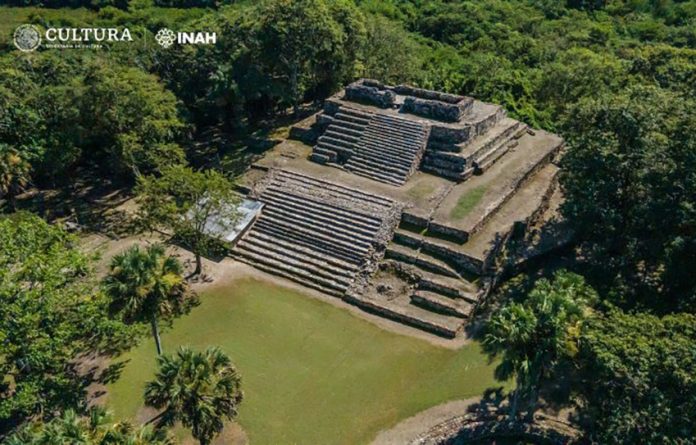A circular temple possibly dedicated to the Maya god Kukulcán has been discovered at the El Tigre archaeological site in Campeche, during archaeological rescue work accompanying the Maya Train project.
Speaking at President López Obrador’s Monday morning press conference, the head of the National Institute of Archaeology and History (INAH), Diego Prieto Hernández, said that the find was of “great importance.”

“This building broadens our knowledge of the late occupation of El Tigre,” he explained. “Circular structures generally correspond to the early Postclassic period between A.D. 1000 and 1200, when the Maya zone had links with other regions of Mesoamerica, in particular with central Mexico, Oaxaca and the Gulf coast.”
These links allowed for religious iconography to spread between the two cultures, including the feathered serpent deity known in the Mexica (Aztec) world as Quetzalcóatl, which was likely adopted by the Mayas as Kukulcán.
A key historical source on the region is the “Paxbolón Maldonado Papers,” a document produced for the Chontal chief Paxbolón Maldonado in 1575-1576. It describes a settlement known as Itzamkanac that featured temples dedicated to the four main divinities of the Postclassic Maya, one of which was Kukulcán.
According to archaeologist Ernesto Vargas Pacheco, who is leading the current excavation, the discovery of a Kukulcán temple at El Tigre would suggest that El Tigre is the Itzamkanac described in the papers — a theory supported by the site’s cited location and other archaeological data.

The newly discovered structure is a circular building with two levels, once crowned by a temple with a flat roof. It is similar to several others in the Yucatán peninsula, in sites such as Edzná, Becán, Uxmal and Chichen Itzá.
In the press conference, Prieto Hernández again praised the Archaeological Zone Improvement Program (Promeza) that accompanies development of the Maya Train, saying that it is allowing Mexico “to recover the glorious past and cultural present of the great Mesoamerican Maya nation.” The excavations in El Tigre are now 87% complete.
In addition, Prieto Hernández expressed solidarity with the regions of Guerrero devastated by Hurricane Otis, and announced that the Historical Museum of Acapulco would be temporarily turned into an operations center to help those affected.
With reports from La Jornada Maya
